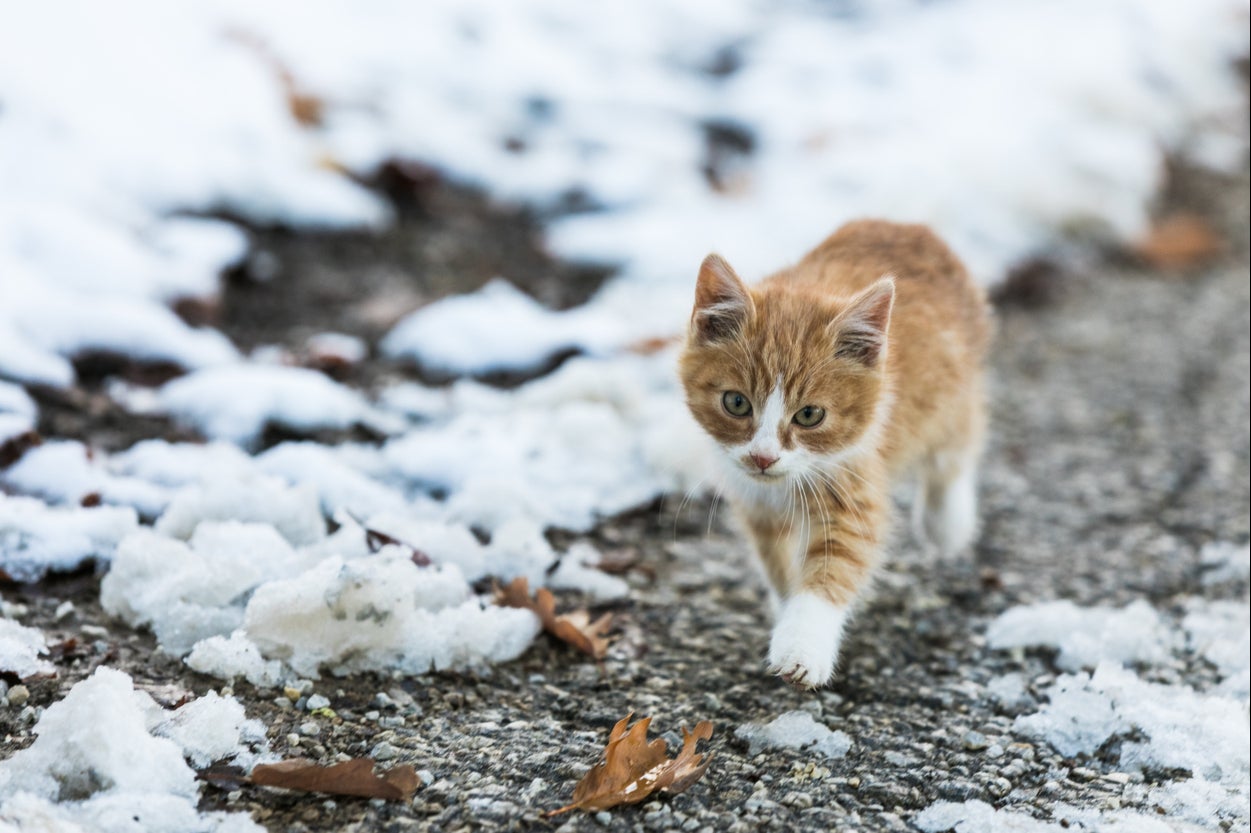After a lengthy spell of freezing temperatures, the mercury is finally set to rise back into double digits next week.
But with conditions remaining cold in many parts of the country, particularly overnight, cat owners may be left in a dilemma over whether it is safe to let their pets go outside again.
Despite most cats being able to stay quite warm as a result of being insulated by their thick coats, they do still get cold – and can suffer from hypothermia or frostbite.
Cats have a normal body temperature of 38C to 39C, which is just slightly higher than humans, and having descended from the desert-dwelling African wildcat, tend to prefer warm temperatures to cold, according to Cats Protection, the UK’s largest cat welfare charity.
What temperature is too cold to let your cat go outside?
According to Medivet, cat owners should avoid letting their pets go outside in conditions that are 7C or colder.
The veterinarian group’s website states: “We strongly advise that anything below 7C is too cold for a cat to go outside … If your cat is hairless, has a particularly short coat or is old, young or sick, this temperature will be much too low for them, and we highly recommend that you keep them indoors where it’s warm.”
Cats are usually good at knowing themselves when the weather is too cold for them and when to seek warmth indoors, according to Cats Protection.

The group says: “If there is extreme weather, such as blizzards or storms, it is best to bring them indoors. Keep them in until the bad weather has passed. Also be aware that some cats will feel the cold even more.”
“If your cat is unable to find somewhere warm, their core body temperature could become dangerously low. This could result in hypothermia. They could also suffer from skin damage caused by frostbite.”
What are the symptoms of hypothermia in cats?
According to Cats Protection, the following symptoms could be signs of hypothermia:
- Shivering. Cats shiver when it’s cold to help keep themselves warm. But if they become severely cold they may stop shivering
- Cold ears, paws and nose
- Pale gums
- Weak and lethargic movements
- Slow heart rate
- Slow breathing
- Confusion and clumsiness
- Collapse/loss of consciousness
However, cats can often choose to spend most of their night outside. Pets4Homes advises that, if you find your cat outside after a very cold night and they are displaying any potential symptoms of hypothermia, it is best to slowly warm them up by wrapping them in blankets and gently massaging their body.
Warning not to warm your cat up too quickly and never to put them in warm water, Pets4Homes then advises to urgently take your cat to see a veterinarian.

What else can cat owners do to keep their pets safe?
Medivet suggests making sure your pet has somewhere warm and dry to go after they’ve been out of the house in a cold snap, with experts warning to always make sure your cat always has unhindered access when it wants to return indoors, particularly if snow or ice could result in a cat flap becoming blocked.
Providing an indoor litter tray also means that cats will not need to go outside when temperatures drop.
Cats Protection also advises making sure that your cat has plenty of fresh water indoors in case any outside sources freeze, and to lock cat flaps at night if you do not want your cat to go outside, while providing them with warm and comfortable and safe places to sleep.
If you have decided to keep your cat inside because of the cold weather, the charity advises making sure that you keep your cat entertained and exercised with plenty of toys and puzzle feeders.


























+ There are no comments
Add yours